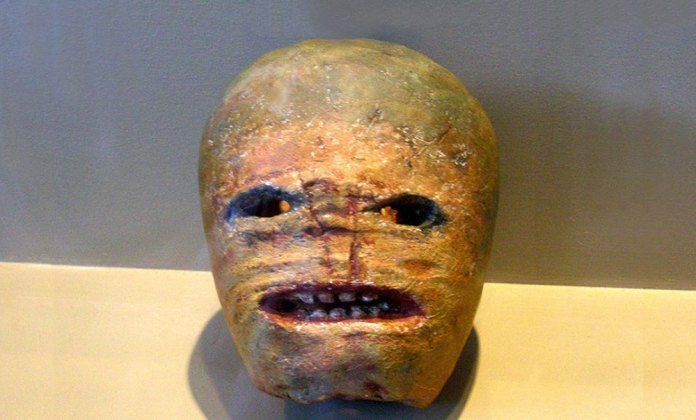Pagan Holiday Primer: Samhain 101
It's that time of year, when all over social media I see people trying to explain the origins of Halloween with no concept of what Samhain is beyond some fluff piece Buzzfeed type article or what their pastor said on Sunday, so in the interests of cultural understanding, I give you: Samhain 101, explained by your friendly neighborhood Druid.
Samhain, which I pronounce "sahv-in," which is the Scottish Gaelic way, and most modern Pagans pronounce "sow-in," which is the Irish Gaelic way, starts at sundown on 31 October and ends at sundown on 3 November. Celtic days began at sundown, and the year began with the dark half of the year, so Samhain is also the Celtic new year. You'll often hear Pagans saying "Happy New Year!" on Halloween; this is why.
On Samhain, the veil between this world and the Otherworld is at it's thinnest, and so it's easy to cross over in either direction. People would/do leave out foods for any deceased loved ones who may come to visit to honor them, and anybody asking for food, gets fed, because you don't know if that's the neighbor kid or a spirit asking, and you don't want to anger a spirit; combine this with dressing in a costume to look like a spirit yourself so the spirits didn't bother you if you were out and about, and this is where trick or treating comes from.
Carving turnips (pumpkins are a later American thing) with scary faces (and a candle inside, maybe?) was meant to scare off unfriendly spirits.

Much more disturbing than a friendly orange pumpkin, no?
(image of a carved turnip in a museum in Ireland, snagged from Bing search)
Lots of divination activities occurred, since the veil was thin, to see what would happen in the new year, which is where bobbing for apples comes from (what you came up with, or not, was taken as a portend).
The wickerman (no, I've actually never seen that movie), was a big man-shaped figure woven out of wicker, that probably held offerings inside which were burned. If you're wondering if people were some of the offerings, no one actually knows; it was the Romans who said the Druids of antiquity practiced human sacrifice, but the Romans said all sorts of propaganda nonsense about all the people they conquered, so we don't know if that's true or a load of BS. The Druids themselves had a writing system (ogham), but didn't write anything important down with it; theirs was an oral tradition. They knew written records could be altered or destroyed ...they didn't see genocide at the hands of Roman imperialism coming. But even if it was true, it would not have been unusual for the time; Christians killed plenty of people "in the name of God," and much later in history: they just called it a crusade or burning a witch or stoning a gay man or ...you get the idea. Modern Druids obviously do not sacrifice people, so stop asking me, before I toss you in a wickerman. ;)
Pagans have no heaven or hell, good/bad, god/devil dichotomy, so any notions of "evil" being involved with the holiday are strictly a Christian invention. The Celtic idea of the afterlife was The Isles of the Dead, where you could go and feast and fight mock battles with your friends, and everyone would come back to life after the fight and feast again. It was not too dissimilar to Valhalla, except without the "and when Ragnarok happens... " part. The Otherworld is also where the Gods/Tuatha de Dannan/Fae live, and is like another dimension to this one, but sometimes described as "across the western ocean" ...which could make the Americas, the Otherworld, but that's a whole different can of beans!
So there you go, Samhain, simplified. Happy New Year!
Very good explained! Thank you! I love the meaning of Samhain and celebrate it every year in my own way, because it is my birthday. ;-) Quite ironic to be born on the day of the dead.^^
That's fantastic! Samhain is my favorite holiday so I think it's an awesome birthday!
In Celtic times, a huge number of people were born around Imbolc (1 February), because Beltaine (1 May) was a fertility festival that involved people going out and having sex in the fields to inspire the crops to be fertile (actually a good idea, if you read the book The Secret Life Of Plants - science!). Nine months from Beltaine is Imbolc, sooooo ...a lot of Celtic babies born then. XD
German Variation of it:
http://www.jahreskreis.info/files/samhain.html
Hugs
Oooh I love it, thanks @phoenixwren, I'll be sharing around to help spread the word! And yeah, the carved turnip is sooooooooo freaky!! HAHAA omg....
Thank you for sharing! :)
The teeth I think especially add to the creepy factor on the turnip...
Yes, for sure! I'm gonna be keeping my eyes out for a huge turnip in the store!!